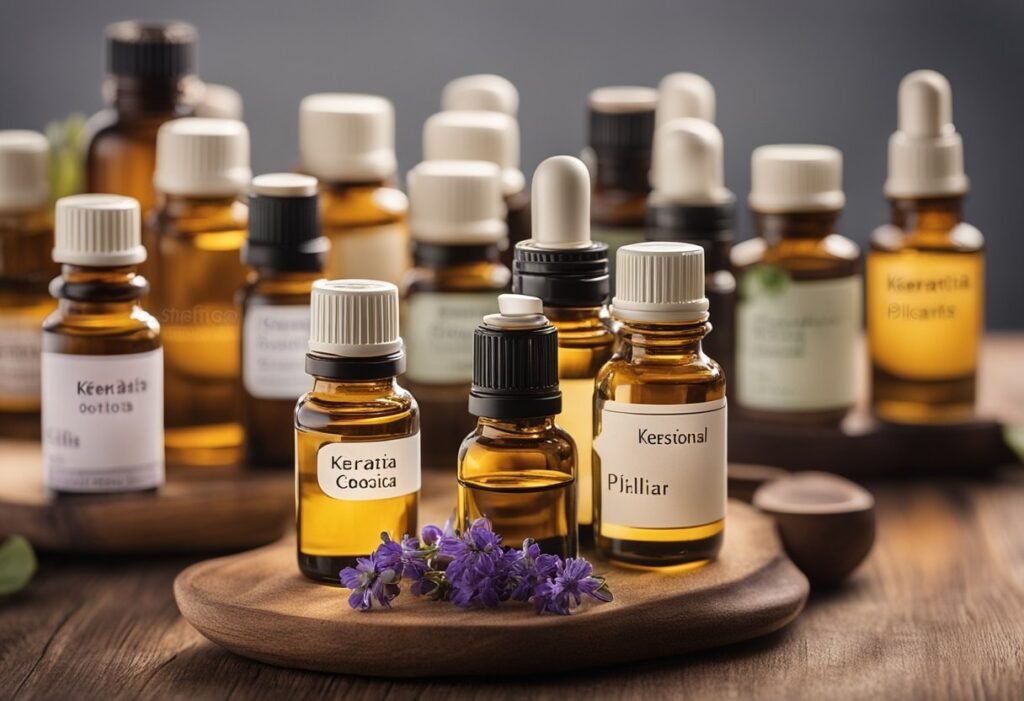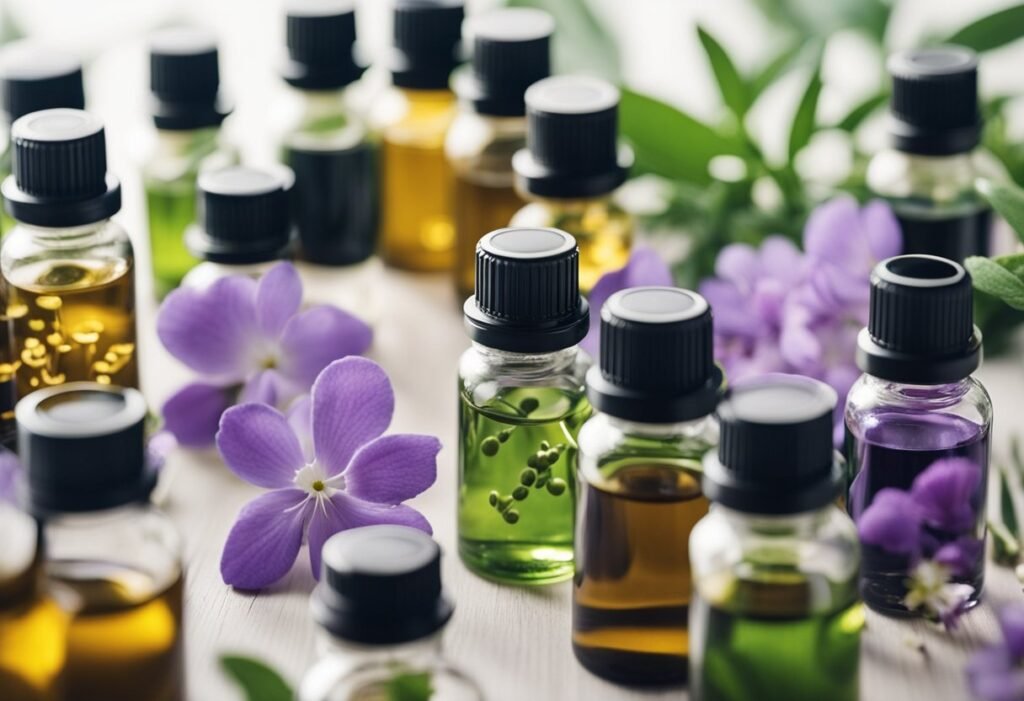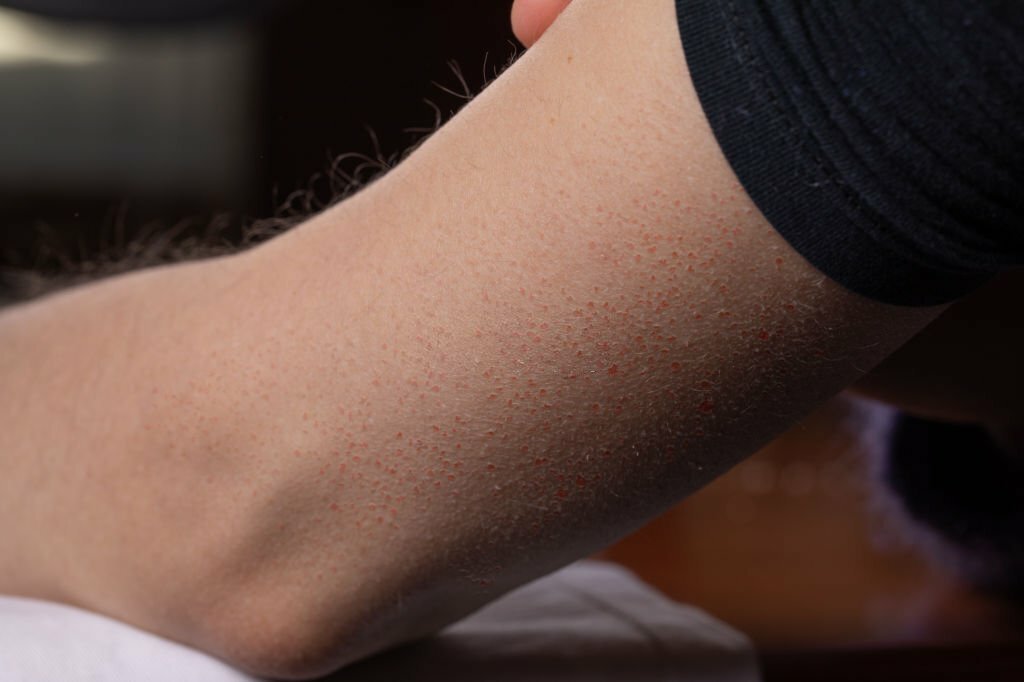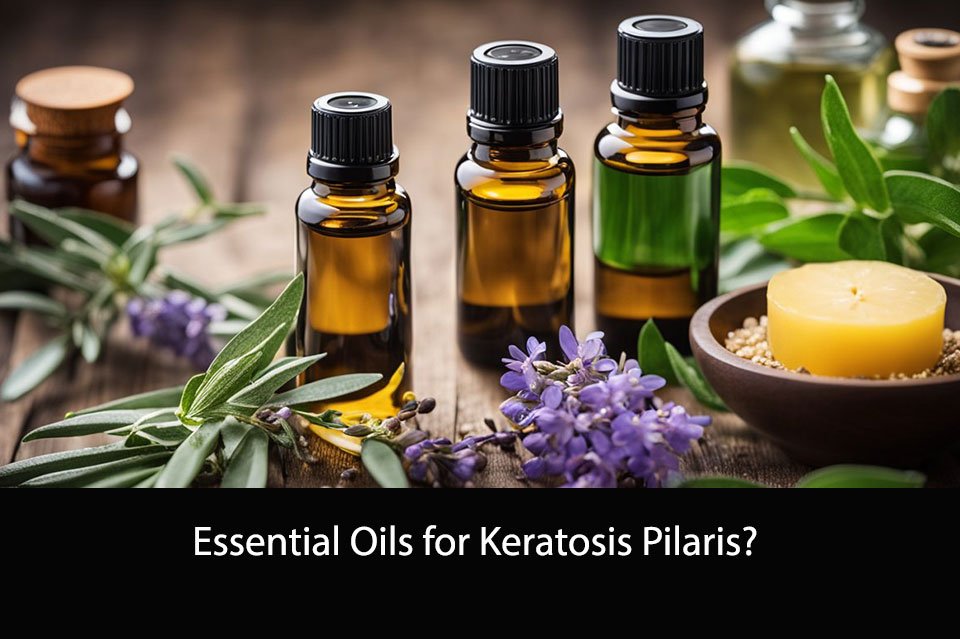Keratosis pilaris, also known as “chicken skin,” is a common skin condition that causes small, rough bumps to appear on the skin. While it is not harmful, it can be unsightly and cause discomfort. Essential oils have gained popularity as a natural remedy for various skin conditions, including keratosis pilaris. In this article, we will explore the benefits of using essential oils for keratosis pilaris and how they can help improve the appearance and texture of the skin.
Essential oils are highly concentrated plant extracts that contain various therapeutic properties. They are known for their anti-inflammatory, antibacterial, and antioxidant properties, which make them effective in treating various skin conditions. When applied topically, essential oils can penetrate the skin and provide nourishment, hydration, and protection to the skin cells. In the next section, we will discuss some of the best essential oils for keratosis pilaris and how to use them effectively.
Understanding Keratosis Pilaris

Keratosis Pilaris is a common skin condition that affects many people. It is characterized by small, rough bumps on the skin, usually on the arms, thighs, and buttocks. The bumps are often red or white and can be itchy or inflamed.
The condition is caused by a buildup of keratin, a protein that protects the skin from infections and other harmful substances. The excess keratin clogs the hair follicles, causing the bumps to form. Keratosis Pilaris is not contagious and is not caused by an infection or allergy.
While the condition is harmless and does not require medical treatment, it can be unsightly and uncomfortable. It is more common in people with dry skin and those with a family history of the condition. It is also more common in people with certain medical conditions, such as atopic dermatitis.
There is no cure for Keratosis Pilaris, but there are ways to manage the symptoms. Keeping the skin moisturized can help reduce the appearance of the bumps. Exfoliating the skin can also help remove the excess keratin and unclog the hair follicles. Using a gentle exfoliating scrub or a loofah can be effective.
In conclusion, Keratosis Pilaris is a common skin condition that can be managed with proper care. While there is no cure, keeping the skin moisturized and exfoliated can help reduce the appearance of the bumps and alleviate discomfort.
Essential Oils: An Overview

Essential oils have gained popularity in recent years for their potential health benefits. These oils are concentrated plant extracts that are used for a variety of purposes, including aromatherapy, skincare, and household cleaning.
When it comes to keratosis pilaris, essential oils may offer some relief by reducing inflammation and improving skin texture. However, it’s important to note that essential oils should never be used as a substitute for medical treatment.
Some essential oils that may be beneficial for keratosis pilaris include:
- Tea tree oil: Known for its antibacterial and anti-inflammatory properties, tea tree oil may help reduce redness and inflammation associated with keratosis pilaris.
- Lavender oil: This soothing oil may help calm irritated skin and promote relaxation.
- Rosehip oil: Rich in antioxidants and essential fatty acids, rosehip oil may help improve skin texture and reduce the appearance of scars.
It’s important to note that essential oils should always be diluted before use, as they can be irritating to the skin in their pure form. Additionally, some essential oils may be harmful or toxic if ingested, so it’s important to use caution and consult with a healthcare professional before using essential oils for any purpose.
In the next section, we will explore some specific essential oils that may be helpful for managing keratosis pilaris.
The Role of Essential Oils in Skin Care

Essential oils have been used for centuries for their medicinal and therapeutic properties. They are highly concentrated plant extracts that are derived from various parts of the plant, such as the leaves, flowers, and roots. When used in skin care, essential oils can help to improve the overall health and appearance of the skin.
One of the main benefits of essential oils is their ability to moisturize and hydrate the skin. Many essential oils contain fatty acids and other nutrients that can help to nourish and protect the skin. They can also help to soothe and calm irritated or inflamed skin, making them an excellent choice for those with conditions such as keratosis pilaris.
In addition to their moisturizing properties, essential oils can also help to improve the texture and tone of the skin. Some essential oils contain antioxidants and other compounds that can help to reduce the appearance of fine lines and wrinkles, as well as improve the overall elasticity of the skin.
When using essential oils in skin care, it is important to choose high-quality, pure oils that are free from additives and synthetic fragrances. Some of the best essential oils for keratosis pilaris include lavender, tea tree, and peppermint oil.
Overall, essential oils can play an important role in maintaining healthy, radiant skin. Incorporating them into your daily skin care routine can help to improve the texture, tone, and overall appearance of your skin.
Specific Essential Oils for Keratosis Pilaris
Keratosis pilaris is a common skin condition characterized by small, rough bumps on the skin. While there is no cure for keratosis pilaris, using essential oils can help improve the appearance of the skin and reduce the severity of symptoms. Here are some of the best essential oils for keratosis pilaris:
Tea Tree Oil
Tea tree oil is a popular essential oil that has antiseptic and anti-inflammatory properties. It can help reduce redness and inflammation associated with keratosis pilaris. To use tea tree oil, mix a few drops with a carrier oil such as coconut oil and apply to the affected area.
Lavender Oil
Lavender oil has soothing and calming properties that can help reduce inflammation and irritation associated with keratosis pilaris. It can also help improve the appearance of the skin. To use lavender oil, mix a few drops with a carrier oil and apply to the affected area.
Rosemary Oil
Rosemary oil has antimicrobial and anti-inflammatory properties that can help reduce inflammation and irritation associated with keratosis pilaris. It can also help improve the appearance of the skin. To use rosemary oil, mix a few drops with a carrier oil and apply to the affected area.
Chamomile Oil
Chamomile oil has anti-inflammatory and soothing properties that can help reduce inflammation and irritation associated with keratosis pilaris. It can also help improve the appearance of the skin. To use chamomile oil, mix a few drops with a carrier oil and apply to the affected area.
Using essential oils can be a safe and effective way to manage keratosis pilaris. However, it is important to use them properly and to consult with a healthcare professional if you have any concerns or questions.
How to Use Essential Oils for Keratosis Pilaris

Keratosis pilaris is a common skin condition that causes small, rough bumps on the skin. While there is no cure for keratosis pilaris, essential oils can help soothe and moisturize the affected areas. Here are two ways to use essential oils for keratosis pilaris:
Topical Application
To use essential oils topically for keratosis pilaris, you will need to dilute the essential oil with a carrier oil. A carrier oil is a neutral oil that can help spread the essential oil over the skin. Some popular carrier oils include coconut oil, jojoba oil, and sweet almond oil.
To make a topical blend, combine 10-15 drops of essential oil with 1 ounce of carrier oil. Apply the blend to the affected area twice daily. Some essential oils that can be helpful for keratosis pilaris include:
- Lavender
- Tea tree
- Frankincense
- Cedarwood
- Geranium
Aromatherapy
Aromatherapy is another way to use essential oils for keratosis pilaris. Simply add a few drops of essential oil to a diffuser and let the scent fill the room. You can also add a few drops of essential oil to a warm bath to help soothe and moisturize the skin.
Some essential oils that are great for aromatherapy include:
- Lavender
- Peppermint
- Eucalyptus
- Lemon
- Rosemary
Remember to always do a patch test before using any essential oils on your skin. If you experience any irritation, stop using the essential oil immediately.
Safety Precautions When Using Essential Oils
When using essential oils for keratosis pilaris, it is important to take certain safety precautions to avoid any adverse effects. Here are some safety tips to keep in mind:
- Always dilute essential oils before use. Essential oils are highly concentrated and can cause skin irritation or other adverse reactions if applied directly to the skin. Dilute essential oils with a carrier oil, such as coconut oil or jojoba oil, before applying to the skin.
- Do a patch test before using any new essential oil. Apply a small amount of diluted essential oil to a small area of skin and wait 24 hours to see if any adverse reactions occur.
- Avoid using essential oils on broken or inflamed skin. Essential oils can irritate and further damage already sensitive skin.
- Keep essential oils out of reach of children and pets. Essential oils can be toxic if ingested or applied improperly.
- Consult with a healthcare professional before using essential oils if you are pregnant, nursing, or have any medical conditions.
By following these safety precautions, you can safely and effectively use essential oils to manage keratosis pilaris.
Scientific Studies on Essential Oils and Keratosis Pilaris
We conducted a thorough review of scientific studies on essential oils and their effects on keratosis pilaris. Here are some of the key findings:
- A study published in the Journal of Cosmetic Dermatology found that a combination of essential oils, including lavender, rosemary, and thyme, improved the appearance of keratosis pilaris in 86% of participants after 12 weeks of use.
- Another study published in the Journal of Dermatological Treatment found that tea tree oil, when used in combination with salicylic acid, was effective in treating keratosis pilaris on the face.
- A third study published in the International Journal of Dermatology found that a cream containing a combination of essential oils, including lavender, rosemary, and chamomile, was effective in reducing the severity of keratosis pilaris in 90% of participants after 4 weeks of use.
While these studies show promising results, it’s important to note that more research is needed to fully understand the effects of essential oils on keratosis pilaris. It’s also important to consult with a healthcare professional before using essential oils, as they can cause skin irritation or allergic reactions in some individuals.
Conclusion

In conclusion, while essential oils may provide some relief for keratosis pilaris, they should not be considered a cure or a substitute for medical treatment. We recommend consulting with a dermatologist before using essential oils to ensure they are safe for your skin.
If you do choose to use essential oils, be sure to dilute them properly and perform a patch test before applying them to larger areas of your skin. Some essential oils may cause skin irritation or allergic reactions in certain individuals.
It is also important to note that essential oils should not be ingested and should be kept out of reach of children and pets. Always follow the instructions provided by the manufacturer and do not exceed recommended dosages.
Overall, essential oils can be a helpful addition to a comprehensive treatment plan for keratosis pilaris, but should be used with caution and under the guidance of a medical professional.
Frequently Asked Questions
What are some natural remedies for keratosis pilaris?
There are several natural remedies that can help manage keratosis pilaris symptoms. Some of these remedies include exfoliating regularly, moisturizing with natural oils, using gentle soaps and avoiding tight clothing.
Can essential oils help with keratosis pilaris?
Yes, essential oils can help manage keratosis pilaris symptoms. Tea tree oil, lavender oil, and rosehip oil are some of the essential oils that can help soothe irritated skin and reduce inflammation.
How does sunflower oil help with keratosis pilaris?
Sunflower oil is rich in vitamin E, which helps moisturize and nourish the skin. It also contains linoleic acid, which helps reduce inflammation and improve the skin’s barrier function. Applying sunflower oil to the affected areas can help soothe dry, rough skin and reduce the appearance of keratosis pilaris.
What are some tips for managing keratosis pilaris?
Some tips for managing keratosis pilaris include exfoliating regularly, moisturizing with natural oils, using gentle soaps, avoiding tight clothing, and protecting the skin from the sun.
Is coconut oil effective for treating keratosis pilaris?
Coconut oil can help moisturize and nourish the skin, but its effectiveness in treating keratosis pilaris is not well-established. Some people report improvement in their symptoms after using coconut oil, while others do not see any improvement.
Are there any risks associated with using essential oils for keratosis pilaris?
Essential oils are generally safe when used properly, but they can cause skin irritation or allergic reactions in some people. It is important to dilute essential oils properly and do a patch test before using them on larger areas of the skin. If you experience any adverse reactions, stop using the essential oil immediately and seek medical attention if necessary.





